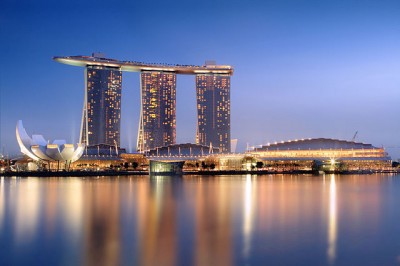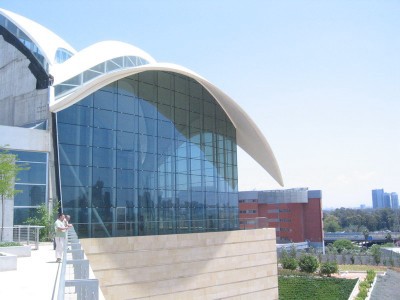I Am David Brooks' Lazy, Unemployable "Missing Man"

Hey, David Brooks wrote a column about me! I am one of the 20% of American men of “prime” working age who does not have a job. And apparently we are destroying America by not “getting up and going to work.” Oh yes: “In 1954, about 96 percent of American men between the ages of 25 and 54 worked. Today that number is around 80 percent. One-fifth of all men in their prime working ages are not getting up and going to work.”
The real menace here is that we are apparently draining Social Security, which is headed for a complete state of brokeness in the not very distant future. (I personally am not. Yet.) Because you know how people love to be going to disability hearings all the time to get that sweet, sweet thousand bucks a month. But also… hey, he has pretty much imagined this crisis of malehood and American vitality.
Sure, for starters, the number of heterosexual, married “stay at home dads” (ugh, I know, horrible phrase) has tripled in the last 15 years?. They alone are raising about 1/4 of a million children. That’s not too many of the “missing men” though, though it’s a chunk.
But is it men who are draining Social Security? Hmm.. “between 1988 and 2008, the fraction of middle-aged men and women ages forty to fifty-nine receiving SSDI benefits rose by 45 percent among males (from 3.9 to 5.6 percent) and 159 percent among females (1.9 to 5.0 percent).” So… it’s really not the men on disability that are the “problem,” it’s those lazy, “missing” disabled women too. I bet they are eating lobster with their Social Security checks!
And in fact… in 2006, the Times estimated that just “about 25 percent of the missing men” — about 4 million men then not in the workforce — “are collecting this insurance.”
So really, of the “missing fifth” of working age men that Brooks is talking about, some number that is definitely much fewer than half of them are collecting disability. And those are quite possibly… what’s the phrase… right! “Disabled.”
(The Social Security Administration itself says this: “Studies show that a 20-year-old worker has a 3 in 10 chance of becoming disabled before reaching retirement age.” You do the math on that.)
What the academics and reporters do most often in looking at the rise of disability claims is contrast them with the official employment numbers, to see if they track. But what they don’t count for comparison is the underemployment numbers, the people who’ve never gotten on or have rolled off the unemployment insurance rolls. (Hi, here I am!) So then there’s no correlating between the unemployed and the left-behind. We’re just, you know, “missing.” (And apparently not “getting up” in the morning.)
So what we don’t get a good picture of is: who are these “missing” men? Well, for one, we know that “nearly 60 percent are divorced, separated, widowed or never married.” (A rather wide swath. Also, hi!)
Ooh, who else? “Roughly two million men in this group [of non-working men] have prison records.” (People in prison, naturally, aren’t counted among the unemployed.) So, hmm, maybe one thing we could do to deal with the “missing fifth” is undo the country’s perverse insistence on making felons of drug users and also black men in general?
Who else are they? For one: “Seventy-five percent of those on disability have a high school diploma or less education.” (Oh, hello.)
And some of them just don’t need to work: “About 8 percent of non-working men between 30 and 54 lived in households that had more than $100,000 of income in 2004.” So that’s, what… nearly 400,000 or so of the “missing fifth”? I dunno, I don’t have a job, I’m not good at math!
In light of all that, here’s Brooks’ big thesis:
There are probably more idle men now than at any time since the Great Depression, and this time the problem is mostly structural, not cyclical. These men will find it hard to attract spouses. Many will pick up habits that have a corrosive cultural influence on those around them. The country will not benefit from their potential abilities.
By “not cyclical,” he means that it’s not because of the ongoing cycle of recessions. But I don’t think he can assert that. The country doesn’t want their potential abilities, or did I misunderstand that moment recently when millions of workers were cast to the wayside? And, apparently, according to Brooks, the sacred institution of marriage also can’t save them… which… I don’t know, I guess, then they get bad habits, something something, corrosive…??? THIS IS A MESS.
But I think he basically just called us all drugged out waste-cases who’ll never get married. Actually, yes he did: regarding the lack of college education among many of these men, he writes: “More American men lack the emotional and professional skills they would need to contribute.” Um, I may be “missing,” but I can still read the Times and that’s kind of mean?
And yes, that is so weird, that the word “recession” does not show up here. And that the word “unemployment” shows up one time.
What’s most annoying is that he’s somewhat right about the solutions to putting people back to work, if indeed that is the goal. (Whose goal? It’s not the goal of big business; it may not even be the goal of the potential worker. These articles about people “returning to work” always make an example of the man who says “Heck no, I’m not going to make $8 an hour shoveling chicken and support my family, why should I bother?” That not permanently entering the garbage labor force is almost always the right choice for the future seems unfathomable to reporters and academics and op-ed columnists.) Anyway, yes! “Apprenticeship programs, wage subsidies and programs that extend benefits to the unemployed for six months as they start small businesses” are a great idea! Those are things that will also never, ever happen in America.
Analysis of Recommended Insertions
Here you will find “a graphical representation of everything [Eddie] Murphy suggests you put in your butt in ‘Boogie in Your Butt,’ arranged in ascending order of resulting discomfort.”
Eat, Pray, Judge: Lunch With The Sikhs
by Dan Packel

In the month since I’d dined with the Episcopalians for Shrove Tuesday, I’d been spending too much money going out to eat. It was time to take advantage of the generosity of another religious group and avail myself of a free meal, so I headed to the closest Sikh temple.
The trip from my South Philadelphia home took me to the tiny town of Millbourne, just outside the city limits, but serviced by the El train. Of Millbourne’s slightly more than 1,000 residents, the 2010 census found that over half are of Asian descent — and almost all of these are South Asian: Indians, but also Pakistanis and Bangladeshis.
From the El, I quickly found my way to the Philadelphia Sikh Society Guruwdwara, a squat brick building attached to the rear of a dollar store, and arrived at the stroke of noon.
With a massive, floor-standing mixer, a range hood that wouldn’t be out of place at a busy casual chain-dining establishment, and two industrial stainless steel fridges humming away, the kitchen at the society’s gurudwara must sometimes be used for serious volume cooking. My Friday visit did not fall on one of those days.
Indeed there was no indication that the kitchen had actually been used to prepare the day’s langar, the daily free community meal that gurudwaras (sometimes spelled “gurdwara”) provides for Sihks and non-Sikhs alike. No one was stirring inside of the kitchen. Three stainless steel pails of food rested on the long counter, but given the dormant look of the kitchen, the food in the pails could easily have been prepared elsewhere.
Three men sat on the narrow strip of carpet that ran the length of the long wall opposite the kitchen, eating off Styrofoam plates and quietly conversing in Punjabi. Two were clothed in the loose-fitting cotton kurta pajama that serves as a traditional standard of Indian clothing. The third wore trousers and a button-down shirt. All three wore turbans.
Entering the room cautiously, I clasped my hands in greeting and inquired about the food.
“Yes, please. Go ahead,” responded the man clad in western attire. “But first you must cover your head.”
Retreating to the foyer, I grabbed a blue cloth wrap (pre-tied for my convenience), fitted it over my head, and returned.
At the counter, I gave the contents of the silver pails a closer examination. Each was filled halfway to the top. In one: yellow dal, or lentils. Another held a mix of curried potatoes, in a strikingly similar color to the dal. The third: yogurt, both for protein and to cut the heat of the spices. While Sikhs are not strictly vegetarian, the langar always is, so that anyone who shows can partake.
I spooned a serving of all three onto my plate, added two room-temperature rotis
, or flatbreads, that were stacked on a plate, and then grabbed two green chilies and a pinch of iceberg lettuce. The last element counted as the “salad.” (Pronounced “Suhl-ahd” in Hindi, this garnish of undressed raw vegetables — often including tomato, cucumber, and onion — has always struck me through multiple stints in India as an especially peculiar vestige of colonialism. The iceberg was an especially bland example of the practice.) From an insulated beverage dispenser, I filled a Styrofoam cup with milk tea.
Seated on the carpet, I dug into my free lunch. The dal was the highlight. In a standard preparation, the pressure-cooked lentils had been tempered with a paste of garlic, ginger along with onions and chilies. With my hand, I scooped up the pleasantly spicy mix with my roti. This was gone before anything else on my plate.
The potatoes were less appealing. What I’d initially judged (filled with hope!) to be aloo gobi failed to include any gobi (cauliflower). Alongside tender potato chunks were the chickpea-sized spongy orbs known in Indian cooking as “soyabean nuggets.” Simmered in an inoffensive masala paste, the mixture was certainly palatable — but not something to consume with much gusto.
While I ate, two of the men farther down the carpet rose to leave, discarding their plates in a garbage can by the door. All the while, they had barely acknowledged my presence. Perhaps random Caucasian visitors to the unadorned mess hall were more common than I presumed. Or maybe lunch was lunch, and they brooked no unnecessary distractions from their daily meal.
“Can I get you anything else?” asked the third, the same man who had responded to me earlier. Satisfied by the amount of food on my plate, I declined. I then took the opening to see whether strangers like me made regular appearances.
“If anyone is to come, we are to prepare food for them,” he responded inconclusively. “According to the spirit of the one above,” he paused, pointing at the ceiling, “we must provide to anyone who needs food or shelter, regardless of race or religion.”
An admirable creed. And a reminder that the quality of the food per se perhaps wasn’t the real issue here.
Still, finishing my meal, I sputtered a little when I started in on my tea, both lukewarm and lacking sugar.
Luckily, my host, nimbly balancing between solicitousness and unobtrusiveness, stopped in front of me and asked if I’d like my tea heated. “We have a microwave here.” He returned with a hot cup of tea and a cup full of sugar.
I thanked him and introduced myself. He shared his name (Sarwar) and soon wandered across the room. A young Indian woman walked in, served herself a plate, and sat down. I finished my tea, and rose to leave, thanking Sarwar.
“You’re welcome, Mr. Daniel,” he responded. “Please come again, anytime.”
Dan Packel writes about food (and more!) from his home in Philadelphia. You can also follow him here.
The Pill Makes You Like Soft-Faced Pretty Boys
Is your contraception making you less attractive to (and attracted by) guys you should be going after (or who should be going after you)? Uh, sure, why the hell not.
My Cubicle In The Starchitect's Building
My Cubicle In The Starchitect’s Building
by Leah Caldwell

Despite decades of prolific building, 73-year-old Israeli architect Moshe Safdie is still best known for his first project: Habitat 67, the avant-garde housing units constructed for the 1967 International and Universal Exposition in Montreal. The building’s 354 stacked concrete cubes never revolutionized housing as many thought they would, but Safdie’s groundbreaking vision probed how to maintain pleasant aspects of suburban living, like personal gardens and multi-view windows, in a high-density urban environment. Over 7 million people visited Habitat 67 during the Exposition, which was remarkable since it was a residential project, not an extravagant “White City” like the 1893 World’s Fair in Chicago.
Nearly half a century after Habitat 67, I worked five days a week in a cubicle in Safdie’s latest high-profile creation, the United States Institute of Peace in Washington, D.C. And as I stared at a computer screen in my small slice of Safdie-dom, I wondered: What good has visionary architecture ever done for working plebes? Some of the most innovative buildings of this past century have succeeded at radically transforming cities, but have failed to disrupt the traditional layout of internal office space. Why do so-called visionaries repeatedly cement the hierarchical structure of bureaucracy on physical space, rather than challenge it?

Today, Safdie is known as something of a “starchitect,” making his otherworldly designs a part of the mainstream. The new Marina Bay Sands Resort in Singapore (home to the world’s largest infinity pool) and the sprawling, unrealized Habitat Puerto Rico are two of the most striking examples. Starchitecture, according to some critics, is excessive and profit-driven, having spawned the “Bilbao Effect” in cities looking to attract tourist dollars. Starchitects have also been known to help dictators realize their fantasy cities. British starchitect Norman Foster’s master plan designs for Astana, the recently relocated futuristic capital of Kazakhstan, is composed of extravagant structures with little purpose besides feeding the ego of President Nazarbayev. Astana now boasts the largest tent in the world and a giant, luminescent pyramid home to the Palace of Peace and Reconciliation.
Safdie’s style seems tamer than his celebrity architect counterparts, yet he rarely builds without a grand, transformative vision. His “Dream Island” resort will be built in 2012 on an island in Budapest situated on the Danube. A maze of canals snakes in between the luxury casino and 3,000-room hotels, and the project wouldn’t be complete without a 370-foot tall Ferris wheel so guests can marvel at the structures below. A similarly titled project in China “Golden Dream Bay” is further testament to the unspoken exclusivity underlying Safdie’s work. Set for completion in 2014, this beach resort looks like reconfigured Aztec temples stretched along the Chinese coast.
When Safdie isn’t designing luxury resorts, he has tried to make life better for white-collar workers. In the late ’80s, he lamented the “alienating and suppressive” nature of the internal working environment and, as a remedy, suggested more natural light (and even views) for all. From where I sat in my Institute of Peace cubicle, it seemed Safdie had stayed true to his credo decades later. My cubicle was 13-feet away from a window with a view of the Lincoln Memorial (only partially concealed by thick mullions). If one of my bosses left his door open, I could see the top of the Washington Monument. A tour group once walked by my desk and the guide remarked, “Even they have natural light.”
Still, architects must meet the demands of clients. In the case of the US Institute of Peace, the $186 million building was a private-public venture. “Public” as in you paid for it with your taxes and “private” as in Lockheed Martin and BP America each donated a million dollars or more to the building’s construction costs, earning them the title “Founding Corporate Partner.”

Unlike the corporate spaces of some of the building’s backers, the US Institute of Peace is not your typical office building. First and foremost, we are told, the building is a symbol and monument of “peace.” One employee even described it as a “temple.” This claim is literally interpreted in the form of a giant, abstractly configured white dove that hovers over the five-story high building. Had the building been located on Route 66 as opposed to the National Mall, postmodern architects Venturi and Brown might have classified it as a “sculptural symbol and architectural shelter,” meaning the symbol is the building itself. Also, the bird-like roof is not one-of-a-kind as the Institute would have you believe. If you look at Safdie’s portfolio, he used a nearly identical roof for his design of the Yitzhak Rabin Center in Tel Aviv in 2010, constructed a year before the Institute building was complete.
Beneath the symbolic dove, we find the base office building: a tan concrete structure with deep-set windows set apart by two atriums or “great halls.” Stepping inside, it feels like you’re in a fish bowl. Not just because of the mammoth inward-looking atriums, but also in the way that the office windows stretch from the floor to the ceiling. It’s like being trapped in an oversized Rear Window set, but with no need for binoculars and with people doing far less interesting things. Seizing on this opportunity for symbolism, Richard Solomon, the Institute’s president, said, “The design of the new building embodies the open, transparent, and inclusionary nature of peacebuilding. It expresses the aspiration of creating a more peaceful world, and our work is designed to fulfill that goal.”
This is a building intended to inspire awe in the onlooker, yet it still functions as office space. The back staircases and carpeted hallways form the building’s inner pathways, leading the way from each department to the next. Cubicles carve out the interior space, offices line the windows, and executive offices occupy the corners. For an office, it is pleasant, but the defining characteristics of bureaucratic space remain untouched. As Safdie himself described corporate architecture in the ’80s, “Behind the glittering facades, the office landscapes are gloomy.”
Safdie first tried to rectify the state of dismal American office space back in 1985 with his plan for Columbus Circle. Having been invited to submit designs for the former site of the New York Coliseum, he revealed his design for a mega-structure that was unlike anything ever built in the city. For Safdie, it was his first attempt to build “humanistically” on a large scale, bringing natural light and open space to office interiors. Safdie saw his project as a departure from the featureless steel and glass buildings that, he said, without the base and top, were indistinguishable. To critics, Safdie’s vision for Columbus Circle “looked as if it had been dropped into New York from some alien planet.” The project was scrapped.
Safdie’s Columbus Circle was a reaction to the postwar dominance of international style as the new language of office architecture just as much as it was a reaction to the empty ornamentation of postmodernism. In his design, you can see certain parallels with the Institute of Peace; the curved atriums, floor-to-ceiling windows, and connecting bridges are Safdie’s attempts at humanizing office space. This 1945 blurb from an architectural magazine quoted in Reinhold Martin’s The Organizational Complex could’ve described Safdie’s work:
The workers in the office ‘bull pen’ are having their day, and more is being done for them. They are getting not only better light, better ventilation and better working conditions, but also improved and more cheerful surroundings.
Yet the cumulative effect produces few changes in how an average worker inhabits and interacts with her surroundings. Perhaps this is confirmed by the faulty experiments of sociologist George Mayo in the 1920s. Mayo set up shop in the Chicago Western Electric factory and altered such factors as light intensity and length of breaks in order to determine which elements increased worker productivity. Mayo found that, amongst other conditions, better lighting improved worker output. Decades later, the results of the experiments were re-examined and then discredited. Researchers determined that worker output had not increased or decreased based on external factors like light, but due to the worker’s sense that she was the subject of an experiment. This was dubbed the Hawthorne Effect.
The Hawthorne Effect has not dissuaded scientists from examining physical space to find out what makes people better workers or thinkers. A 2006 experiment looked at the relationship between capacity for abstract thinking and ceiling height. And correlations have long been made between wall color and work-style. A Wall Street Journal article went so far as to suggest it’s “possible to begin prescribing different kinds of spaces for different tasks.” That sounds great, but for most of us, workspace is handed down to us and we must adapt.
Brazilian modernist architect Oscar Neimeyer, who built Brasilia and contributed to the design of the UN Headquarters in Manhattan said, “Architecture has always been directed to the upper class, and things haven’t changed. Nowadays there are almost no creative projects dedicated to improving the life of those who don’t have money… But I insist that the answer to this change is not architecture. It is revolution.”
White-collar workers might not be at the fore of Niemeyer’s revolution, but the attempts to mold office space into some type of utopia, while seemingly well intentioned, make me uncomfortable. Just like calling co-workers “teammates” and a boss your “team leader,” there is something dishonest about attempts to subtly alter work environments to engender whatever qualities are valued in workers these days. Perhaps this is why even visionary buildings like the US Institute of Peace can radically transform city landscapes, but on the inside, the office space comes across as mere tinkering with old formulas intended to bolster worker morale.
Leah Caldwell lives in Washington DC and is writing an ill-timed travel guide to Damascus. She writes about the Syrian media here.
Institute of Peace photo by M. Fitzsimmons; Marina Bay Sands photo by Someformofhuman; Rabin Center photo by Sambach; all via Wikimedia Commons.
'Dancing Lessons for the Advanced in Age'
Fans of the certain kind of discursive middle European storytelling that seems to be about everything and nothing all at once will be happy to learn that Bohumil Hrabal’s Dancing Lessons for the Advanced in Age is once again in print. Brief summary: “Speaking to a group of sunbathing women who remind him of lovers past, this elderly roué tells the story of his life — or at least unburdens himself of a lifetime’s worth of stories. Thus we learn of amatory conquests (and humiliations), of scandals both private and public, of military adventures and domestic feuds, of what things were like “in the days of the monarchy” and how they’ve changed since. As the book tumbles restlessly forward, and the comic tone takes on darker shadings, we realize we are listening to a man talking as much out of desperation as from exuberance.” The book is one epic sentence, but it works; it’s one of those stories you read in a single sitting and then go back to reread to see how much you missed the first time. Recommended!
After a Silent Year, Firmuhment Returns

Guess who’s back, after a year of silence? Firmuhment, the world’s most legendary Tumblr proprietor. Today he’s reading an Elisa Gabbert poem to us! Where has he been? What has he seen? I don’t really know, but I feel like I’ll figure it out between the lines.
Study Finds Association Between Coolness, Sociability

Science, what’s going on with the youth of today?
Teens who drink alcohol spend more time using the computer for activities such as social networking than do those who don’t drink alcohol, according to a new study. The study found a link between recreational use of the computer (for non-school related activities) and teen drinking…. However, the study found only an association, and not a direct cause-effect link. This means it’s impossible to tell which happened first: the computer use or the drinking. It could also be that teens who drink are prone to using the computer for longer periods of time.
Yes, it’s a real mystery.
Photo by hygienematters, from Flickr.
"Human Sexuality," The "Best Course" at Northwestern, is Canceled
“Prof. John Michael Bailey’s popular Human Sexuality course, which came under national scrutiny following a controversial after-class, optional sex toy demonstration in February, will not be offered next academic year.”
— America’s most infamous college class is dead. But according to one student’s account of attending the class, it was the best course at Northwestern.
